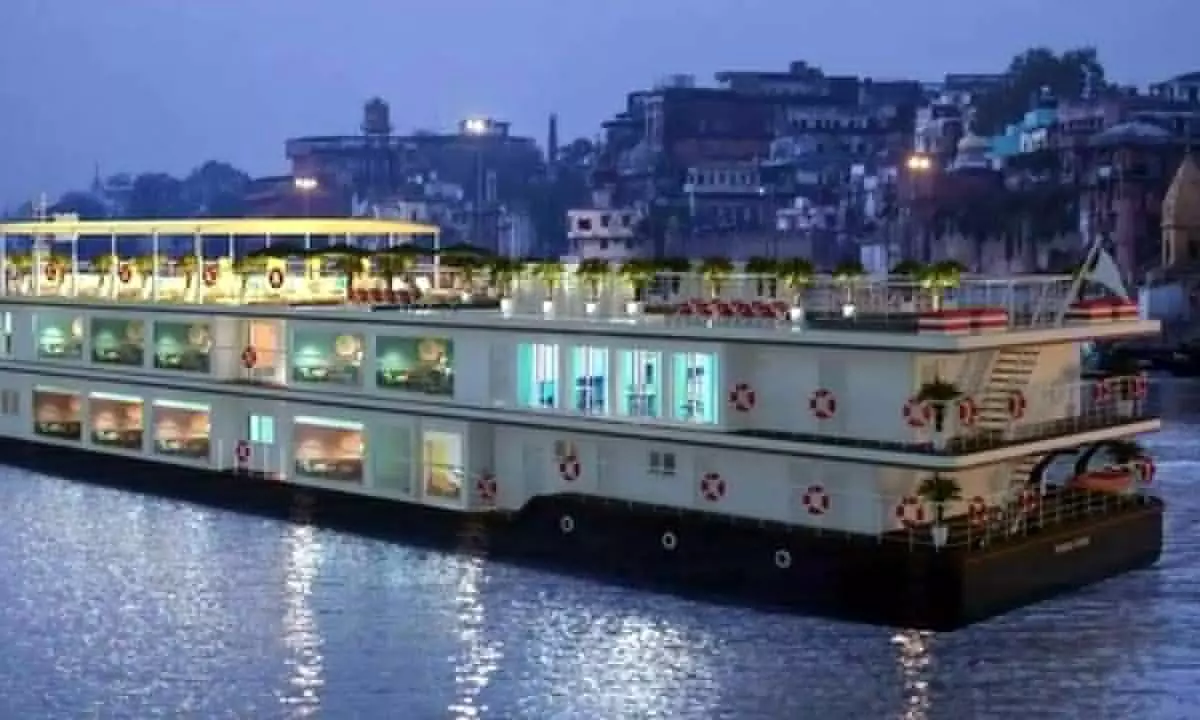MV Ganga Vilas: A belated, but giant leap for tourism
Modi’s endeavour to boost tourism, including those only the superrich can afford, is conspicuous
image for illustrative purpose

This is a whiff of fresh air in Indian politics that has otherwise been polluted with socialist doctrines, poverty-glorifying rhetoric and poverty-promoting policies. The swamp ensured that tourism, which has an enormous potential for economic development and job creation, was either ignored or harshly treated by government at all levels.
On the face of it, the launch of MV Ganga Vilas, the world's longest river cruise, on January 13 was a routine event.
A closer look would, however, show that when Prime Minister Narendra Modi flagged off the cruise in Varanasi through video conferencing, he gave a big boost to tourism, especially in the eastern states. More importantly, he did so by trashing many shibboleths that have been the bane of not just tourism but also the economy.
The benefits of luxury cruise scarcely need any narration - boost to local tourism, ancillary sectors, local economies and employment generation, among others.
Approximately, 32 Swiss nationals will relish the 51-day Indian odyssey on their maiden journey to reach Dibrugarh in Assam via Bangladesh.
Cruise tourists will enjoy the scenic beauty of 27 river systems (including those that have not been tarred with environmental degradation and illegal colonies) and visit 50 major tourist destinations, including national parks, river ghats, world heritage sites, and cities like Patna, Shahiganj in Jharkhand, Kolkata, Dhaka and Guwahati.
MV Ganga Vilas is 62 metres long and 12 metres wide with a draft of 1.4 metres. It has three decks that accommodate 18 suites for a maximum of 36 tourists. Everything about it is plush -carpeted corridors, indoor gym, elegant-looking walls, tasteful interiors, spacious rooms with big windows for a panoramic view of the journey and beautiful decks with wooden flooring. In short, every comfort and indulgence that money can buy.
Unsurprisingly, the cost of boarding MV Ganga Vilas is very high - Rs 20 lakh per head. Modi's endeavor to boost tourism, including the segment only the superrich can afford, is conspicuous.
He said at the inauguration, "With this cruise, many places of eastern India will now figure on the world tourism map. What can be more unfortunate than the fact that since Independence the banks of Ganga have become backward, let alone develop [them]."
This is a whiff of fresh air in Indian politics that has otherwise been polluted with socialist doctrines, poverty-glorifying rhetoric and poverty-promoting policies. Modi is perhaps the first Prime Minister who is trying to rise above this swamp and escape its miasma. In a long period, spanning over a century, politician after politician has added the pollutants of their toxic rhetoric to this swamp.
Worse, all kinds of politicians are guilty of promoting the poverty-glorifying rhetoric - from Mahatma Gandhi to the crooked ones. The swamp ensured that tourism, which has an enormous potential for economic development and job creation, was either ignored or harshly treated by government at all levels. Jawaharlal Nehru had a fetish for heavy industries; Indira Gandhi further turned Leftward, primarily because her backers were socialists and communists; and Rajiv Gandhi was focused on computers and preparation for the 21st century.
From the perspective of the political class, tourism was all about rich people having fun -something that did little to develop the nation or help the poor. It didn't occur to our political masters that tourism is an area which provides jobs to various strata of society - the trained and the untrained, the educated and the uneducated. Besides, it helps sustain traditional arts and crafts, many of which are languishing and several have already become extinct. Then there are the ancillary sectors and professions which gain.
It is mainly because of the politicians' bias against tourism that it is a sector which is highly taxed, something that even parliamentary committees have reported. Since politicians regarded tourism as an unnecessary distraction, they rarely hankered for this portfolio. The first Union tourism minister, Karan Singh (1967-73) is also the last high-profile politician to hold the portfolio.
It was only in the aftermath of the 1991 reforms, when socialist ideas lost some of their meretricious charms, that almost all states began promoting tourism. However, our politicians have miles to go.
Some are unwilling to shed their misgivings about luxury tourism.
Congress leader Jairam Ramesh on Monday scalded MV Ganga Vilas, calling it "obscene"! He tweeted, "The river cruise on the Ganga unveiled by the PM is obscene! Who can afford Rs 50 lakh [later corrected as Rs 50,000] per night except the filthy rich (sic)?"
How on earth could a luxury cruise, where everyone would like to spend some time, be obscene? He also slammed the Modi government for allegedly damaging the ecosystem. Everything about Ramesh's remarks is topsy-turvy, for the luxury cruise is expected to pressure the local administrations and people to keep the Ganga clean rather than pollute it.
Against this backdrop, Modi's bid to promote luxury tourism is laudable. We hope that he will do an encore.

